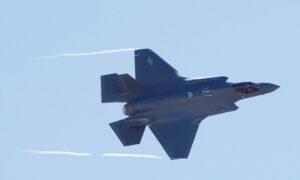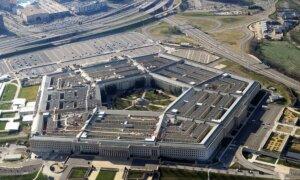Memorial Day, a solemn day of remembrance, has just passed. As Americans, every year we honor the men and women who gave the ultimate sacrifice for their country. Their bravery must never be forgotten, and we preserve their memory in our national collective conscious through Memorial Day celebrations across our great country. Every year, I am proud to set aside time with my family and friends to commemorate this national holiday.
As a nation, we can also honor the fallen by ensuring our men and women serving in the armed forces are justly compensated and have the best platforms available to protect our national security. Maintaining our national security supremacy is personal to me having served for 14 years in the Army and Air Force as a pilot of rescue helicopters and the B-1B bomber. Later, I was able to build on that experience serving in Congress for more than a decade as a senior member on both the House Intelligence Committee, China Select Committee, and Appropriations Defense committees, which oversees all our national security spending. But perhaps one of the assignments I enjoyed the most, a felt most passionately about, was being co-chairman of the bipartisan House F-35 Caucus.
I come from a family of pilots. My father was a pilot in WWII. I will always remember when he sat with me in the cockpit of the B-1 and flew with me in the simulator. He was simply blown away by the capabilities that aircraft offered, the sophisticated technology and performance. I was reminded of this experience the first time I sat in the cockpit of an F-35 and flew the simulator. It wasn’t just a generational advance in technology; it was several generations ahead of what I was expecting.
Simply put, the F-35 is a national asset, a one-of-a-kind aircraft that is years ahead of our nearest competitors. As a multi-purpose fighter, it has the lethality to defeat targets on the ground as well as in the air, a critical flexibility that will be determinative in any future conflict, but particularly in the event we find ourselves at war in the Pacific. Its ability to monitor and collect threat and target information, understand, prioritize, and disseminate this information to the pilot and trusted wingman, makes it truly unique. Further, its ability to attack the highest value targets due to its stealth technology makes it even more unique.
To do this, we will have to increase the aircraft’s cooling system capabilities by more than two-fold. The F-35 Lightning II Joint Program Office (JPO) recently recognized this enormous challenge in future cooling systems and solicited input from the private sector for permanent, innovative solutions. Gratefully, the RFI yielded some impressive suggestions for upgrades to the existing platform. Some of these proposals will drive down costs while leading to greatly enhanced capabilities. JPO was right in seeking the brightest minds in industry to solve this critical challenge. Congress and all the shareholders on the program should embrace competition and formally move ahead with an industry competition.
Competition for the F-35 cooling system is the right call to bring capability and stability to the program. Stakeholders should not only embrace but demand that this happens. To take any other route would betray the future of this enormously important weapon system, and possibly our national security.
One day, I hope one of my grandchildren will sit with me in the cockpit of the F-35 and proudly show it off to me, like I showed off the Bone to my dad. But that will only happen if we are thoughtful in how we plan and execute the plan to upgrade the aircraft. Competition and innovation are the key to this success.



